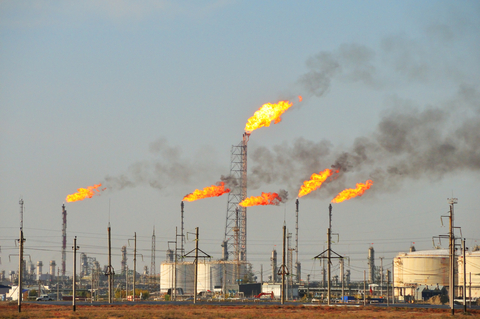Flare gas reduction: Graforce a winner at Petronas Race2Decarbonise for groundbreaking solution
BERLIN–(BUSINESS WIRE)– Out of more than 500 global solutions, Graforce was recognized at the Petronas Race2Decarbonise with its methane electrolysis technology (plasmalysis) in the category “Gas Flaring Reduction or Elimination.” The competition is aimed at accelerating the development of low-carbon solutions and reducing greenhouse gas emissions.
This press release features multimedia. View the full release here: https://www.businesswire.com/news/home/20230329005084/en/

Gas flaring causes more than 400 million tons of CO2 emissions every year. Graforce’s methane electrolysis technology is a groundbreaking solution that converts flare gas and other hydrocarbons into clean hydrogen and solid carbon. (Photo: Business Wire)
Gas flaring results in more than 400 million tons of CO2 emissions every year. Thousands of gas flares at production sites around the globe burn approximately 150 billion cubic meters of natural gas each year, thus wasting a valuable resource. Plasmalysis, on the other hand, converts methane and other hydrocarbons previously vented or flared into clean hydrogen and solid carbon, thus generating climate-neutral energy.
Using hydrogen, a clean, sustainable energy source, can reduce greenhouse gas emissions and thereby mitigate climate change. Graforce is the world’s first company to offer a market-ready technology to decarbonize flare gas production and dramatically reduce emissions. Since the proprietary process doesn’t produce any CO2, this technology is also the first alternative to carbon capture and storage.
“Europe accounts for only 2 percent of global routine gas flaring, but the European Union is considering regulation to end routine flaring and venting,” said Dr. Jens Hanke, CTO of Graforce. “Being recognized in this prestigious competition is proof that flare gas plasmalysis is an excellent solution in line with methane emission regulation. Moreover, the EU can achieve its decarbonization targets if flare/landfill gas, LNG, LPG or natural gas are no longer burned, but converted into hydrogen and solid carbon powered with green electricity in our hydrogen plants.”
In the modular plasmalysis plants, a high-frequency plasma field generated by renewable electricity splits hydrocarbons, such as methane, into their molecular components: hydrogen and solid carbon. Compared to water electrolysis, plasmalysis requires only one-fifth the electrical energy to produce the same amount of hydrogen.
About
Graforce is a German hydrogen technology company. Their power-to-X plants produce carbon dioxide free or carbon dioxide negative hydrogen and synthetic feedstocks – with highest efficiency and lower infrastructure costs in the multi-megawatt range. Thus, Graforce decarbonizes fossil energies, industries and the heat, transport and building sectors. Graforce is currently in the process of expanding its financial and strategic partnerships to quickly scale its hydrogen technology worldwide.
View source version on businesswire.com: https://www.businesswire.com/news/home/20230329005084/en/
Contacts
Graforce GmbH
Dr. Jens Hanke
Phone: +49 30 – 63 2222-110
presse@graforce.de

